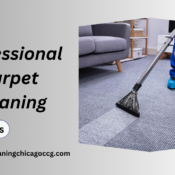
Common Mistakes to Avoid When Installing a New Carpet
In American homes, carpets make up over half the flooring. It’s safe to say carpet is an incredible flooring option, and it isn’t a fad that will go away any time soon.
Installing a new carpet can be a cost-effective way to enhance the comfort and aesthetics of your home. If you use the right techniques, have the tools needed for the project, and do thorough research on the topic, you will be able to achieve a professional-looking result and enjoy the cozy and inviting space that you created yourself.
Over time, furniture and foot traffic can leave your carpet looking dirty and worn down. Regular cleaning can increase the life of your carpet, but when it reaches a stage where this is no longer feasible, replacement is a good option.
So keep reading to find out more about the common mistakes you should avoid when installing a new carpet.
Benefits of a New Carpet
Carpets provide a soft and cushioned underfoot surface and thermal insulation that retain warmth in a room and can contribute to energy saving. Carpets also act as sound absorbers, reducing the impact of footsteps. This creates a quiet and peaceful environment and can be useful in multi-story homes where noise control is needed.
Carpets offer a stable surface to walk on with traction that reduces the risk of slipping compared to hard flooring surfaces. This can be beneficial for households with young children or individuals with mobility challenges.
Carpets are available in a wide range of colors, textures, and patterns. This gives you the benefit of choosing a style that will suit your decor and personal taste well.
A good quality carpet that is well maintained can be long-lasting. Today carpets are designed to be stain resistant and durable, making them suitable for use in many areas of your home.
When installing a carpet yourself, it’s important to have the right tools on hand to ensure a smooth and successful installation.
Tools You Will Need for the Project
A measuring tape is needed to accurately measure the dimensions of the room and determine the amount of carpet you’ll need.
A knee kicker to use when stretching the carpet and securing it in place along the edges of the room. It’s a handheld tool with a padded end that you strike with your knee to create tension.
A power stretcher is a more advanced tool used to stretch the carpet over larger areas. It consists of a long pole with a lever mechanism that helps stretch the carpet evenly and tightly. This tool can be rented.
A carpet knife or utility for cutting the carpet and underlay to fit in the room, as well as for making precise cuts around corners, doorways, and other obstacles These knives prevent damage to skirting or hardwood floors due to their shape.
Seam tape and adhesive for joining carpet pieces together. Choose a high-quality seam tape and adhesive specifically designed for this use.
A seam iron to activate the seam tape adhesive through heat. You can rent this tool for the duration project.
A carpet seam roller ensures proper adhesion of loop pile carpets. It hides the seam, and the wheel rollers improve the transfer of the tape adhesive into the carpet and smooth out any wrinkles or bumps in the seam tape.
Carpet tack strips are wooden strips with small nails or tacks protruding from them. They are used to hold the carpet in place along the edges of the room.
A staple gun for attaching the carpet padding or underlayment to the subfloor, especially in areas where tack strips cannot be used, such as on stairs.
Carpet underlay provides cushioning and support for the carpet. Ensure you have the appropriate type and thickness for your specific carpet and installation needs.
Mistakes to Avoid When Installing a Carpet Yourself
Failing to plan the installation can lead to mistakes. Measure the area accurately, consider seams or transitions, and plan the layout accordingly. If you’re unsure, it’s best to hire a professional carpet installer to take the measurements and install the carpet for you.
Make sure to properly prepare the carpet before installation. Unroll it and let it acclimatize to the room’s temperature and humidity for 24 hours. This allows the carpet to relax and minimize stretching or shrinking after installation.
The subfloor must be clean, smooth, and free of debris. Remove any old carpet padding, adhesive residue, and tacking strips, and ensure the subfloor is level. Uneven subfloors can cause warping or irregular wear of the carpet in the future.
Seaming is part of the process when installing carpets in larger rooms. Failing to create a proper seam or not using quality seam tape can result in visible and weak seams. All edges of the carpet pieces must be cleanly cut and properly aligned before seaming.
Proper stretching is critical to prevent wrinkling, buckling, or premature wear of the carpet. Use a power stretcher to achieve the correct tension across the entire carpet.
Take care when trimming the excess carpet around edges, corners, or other obstacles. Make precise cuts and leave sufficient space for tucking the carpet under or into the baseboards or trim. Untidy trimming will result in an uneven appearance or loose edges and look unprofessional.
Each carpet brand has specific installation guidelines provided by the manufacturer. Read and follow these instructions carefully to ensure proper installation and to avoid voiding any warranties where applicable.
Installing a carpet requires planning, patience, attention to detail, and some physical effort. Rushing the installation can result in mistakes, so take the time to do it right.
Avoid These Mistakes
When it comes to installing a new carpet, it can be incredibly daunting if you haven’t done it before. Luckily carpet installation services exist for this very reason. You don’t have to do it alone; simply hire a professional to do the heavy lifting for you.
If you’re installing carpet in the near future, contact us. If you’re in the Chicago area, the Carpet Cleaning Group can solve your carpet cleaning needs.



